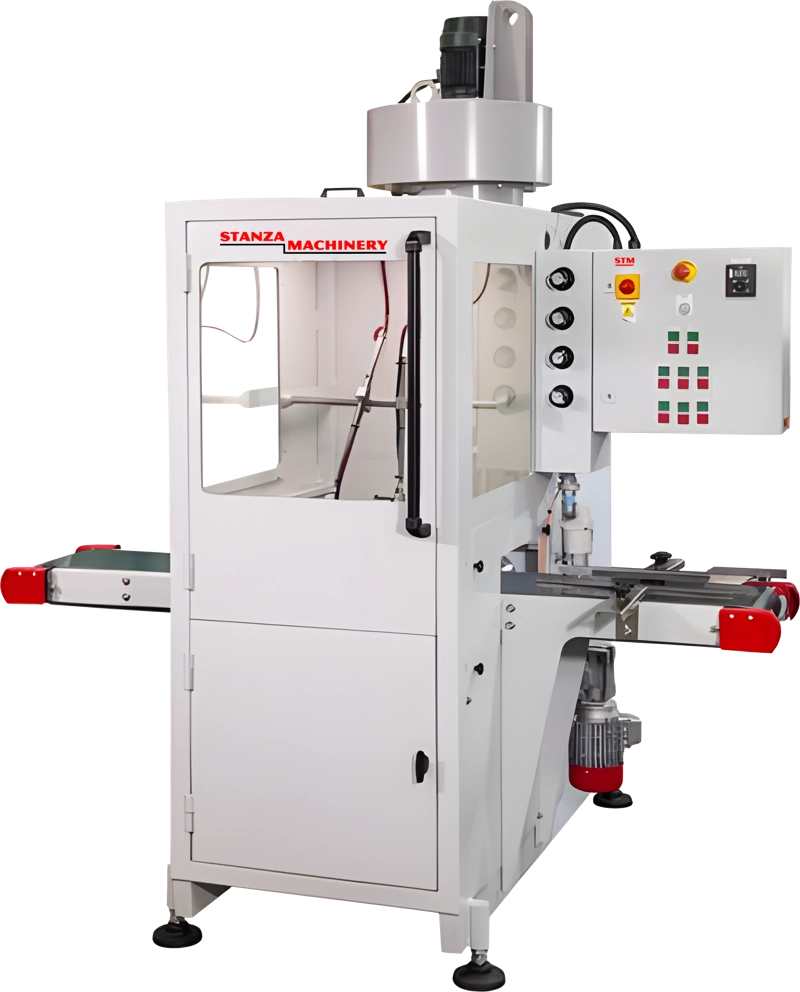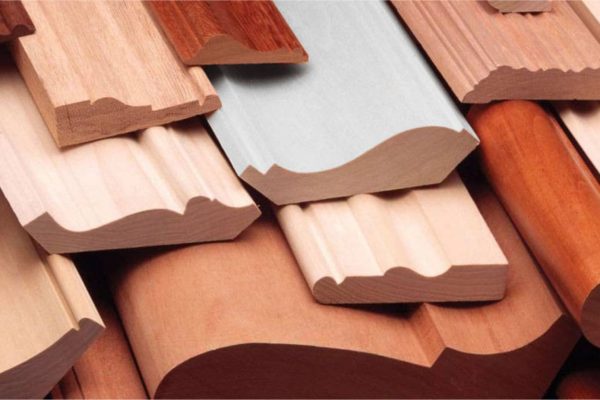In the wood moulding industry, the finishing process is one of the most critical steps in achieving a professional, high-quality product. From enhancing durability to elevating visual appeal, the choice of finish application method directly impacts customer satisfaction and production efficiency. Two of the most common and effective finishing technologies are Vacuum Coating and Spraying.
Let’s take a closer look at the major steps in the finishing process: sanding, staining, sealing, and top-coating, and compare the advantages of spraying vs. vacuum coating methods.
Profile Sanding: Preparing Mouldings for a Smooth Finish
Unfinished mouldings exiting the moulder often require profile sanding before finishing. This step ensures a smooth surface free of knife marks and other imperfections.
Configuration Matters: The sanding setup depends on the substrate, milling process, and desired finish.
Belts & Wheels: A combination of sanding belts and wheels deliver the best results for removing tool marks.
Light Denibbing: In cases where only minor surface preparation is needed, flap wheels can provide adequate smoothing.

Proper sanding ensures that whether you choose vacuum coating or spraying, the finish will adhere consistently and meet quality standards.
Staining: Adding Color to Wood Mouldings
Staining wood mouldings is typically done with water-based formulations, often paired with UV coatings. Most applications require only a single coat, which can be left to dry naturally or wiped for a specific look. Stains can be applied in two primary ways: spray coating or vacuum coating.
Spray Coating
Flexibility: Spray coating offers excellent versatility and doesn’t require profile-specific templates.
Drawbacks: Overspray can lead to up to 40% material waste, and spray guns require frequent maintenance.
Drying: Stained mouldings may be dried using infrared (IR), convection ovens, or traditional racking.

Vacuum Coating
Efficiency: This method boasts nearly 100% transfer efficiency with full four-sided coverage.
Consistency: Vacuum coating provides a uniform stain application, reducing drying times.
Setup: Requires individual templates for each moulding profile, and color changes involve machine cleaning.
Advanced Options: Under the right conditions, vacuum coating can even be used with UV stains.

UV Sealer & Topcoat: Protecting and Perfecting the Finish
After staining, most standard mouldings receive two coats of UV sealer and topcoat. A light sanding (denibbing) is done between coats to smooth raised grain and ensure adhesion.
Benefits of UV Coatings
Dual Purpose: UV coatings act as both a sealer and a topcoat.
Durability: They provide a clear, protective finish that enhances longevity and resistance.
Application Methods
Vacuum Coating: The preferred method for UV application thanks to four-sided coverage, high efficiency, and reduced waste.
Spray Coating: Still widely used but limited to three-sided coverage and lower transfer efficiency.
UV Cure Ovens

Once the first UV coat is applied, mouldings pass through a UV cure oven. Line speed determines the number of lamps:
-3 lamps: 50–60 feet per minute
-7 lamps: 100–120 feet per minute
After curing, mouldings are denibbed and receive their second UV coat. The finished mouldings are then ready for packaging. Many manufacturers now use integrated finishing lines that combine a vacuum coater, curing oven, and denibber for maximum efficiency.
Choosing Between Spraying and Vacuum Coating
Both methods have clear benefits, and the best choice depends on production volume, finish requirements, and operational flexibility.
Spray Coating is best for flexibility and small runs where frequent color changes are required whereas
Vacuum Coating excels in high-volume production, delivering consistent quality, minimal waste, and four-sided finishing.
The finishing process involves careful preparation, the right stain application method, and durable UV sealing. While both spraying and vacuum coating remain industry standards, vacuum coating has become the go-to method for manufacturers seeking efficiency, consistency, and reduced waste.
By choosing the right finishing technology, manufacturers can deliver moulding products that not only meet but exceed customer expectations in appearance, durability, and performance.

